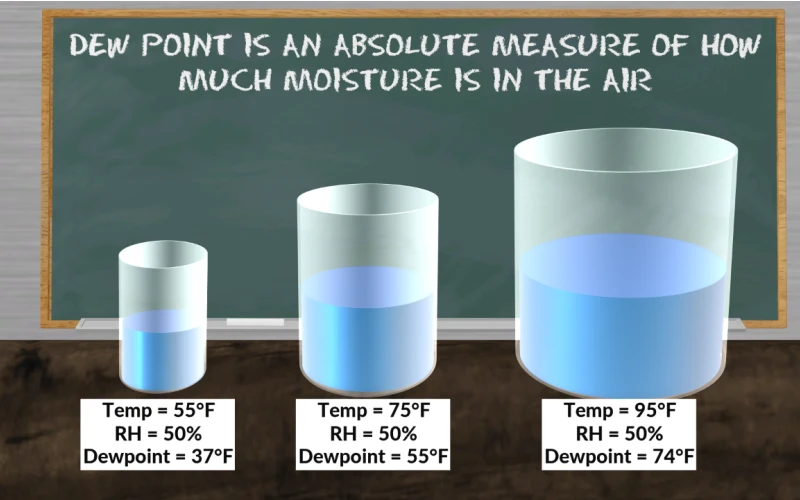
# How is Dew Point Calculated?
## Understanding Dew Point
Dew point is the temperature at which air becomes saturated with water vapor, leading to the formation of dew, fog, or frost. It’s a crucial measurement in meteorology, HVAC systems, and various industrial processes. Understanding how to calculate dew point helps predict condensation and assess comfort levels in different environments.
## The Basic Formula
The most common method for calculating dew point uses the Magnus formula:
Td = (b × α(T,RH)) / (a – α(T,RH))
Where:
– Td is the dew point temperature
– T is the air temperature
– RH is the relative humidity (as a decimal)
– a and b are Magnus coefficients (a = 17.27, b = 237.7°C)
– α(T,RH) = (a × T)/(b + T) + ln(RH)
## Step-by-Step Calculation
Let’s break down the calculation process:
1. Convert relative humidity from percentage to decimal (divide by 100)
2. Calculate the intermediate value α(T,RH)
3. Plug the values into the dew point formula
4. Solve for Td
## Example Calculation
For air at 25°C with 60% relative humidity:
1. RH = 60/100 = 0.6
2. α = (17.27 × 25)/(237.7 + 25) + ln(0.6) ≈ 1.646 – 0.511 ≈ 1.135
3. Td = (237.7 × 1.135)/(17.27 – 1.135) ≈ 269.7/16.135 ≈ 16.7°C
## Alternative Methods
Other approaches to calculate dew point include:
### Psychrometric Charts
These graphical tools show the relationship between air temperature, humidity, and dew point. By knowing two parameters, you can find the third.
### Online Calculators
Many websites offer dew point calculators that perform the complex calculations instantly when you input temperature and humidity values.
### Instrument Measurements
Specialized instruments called dew point meters or hygrometers can directly measure the dew point temperature in various environments.
## Practical Applications
Knowing how to calculate dew point is valuable for:
– Weather forecasting
– Preventing condensation in buildings
– Industrial processes requiring specific humidity levels
– Determining comfort levels in indoor environments
– Agricultural planning and frost prevention
## Limitations and Considerations
While the Magnus formula provides good estimates, it’s important to note:
– The formula assumes standard atmospheric pressure
– Accuracy decreases at extreme temperatures
– Different coefficients may be used for specific temperature ranges
– Local conditions like altitude can affect results
Understanding these calculations helps professionals make informed decisions about humidity control and condensation prevention in various applications.
Keyword: how is dew point calculated